|
part 6 |
A rather extensive collection of beautiful life-model sets of |
|
|
||||||||||
| Go to: | part 1 | part 2 | part 3 | part 4 | part 5 | part 6 | part 7 | part 8 | part 9 | part 10 |
|
|
||||||||||
|
The Village Blacksmith. A Service of Song by the Rev. M.B. Moorhouse. Made by Bamforth & Co., England. C. 1890. 'The Village Blacksmith' is originally a poem by Henry Wadsworth Longfellow, first published in 1840. The poem describes a local blacksmith who works by the sweat of his brow and does not owe anyone anything. Children coming home from school stop to stare at him as he works, impressed by the roaring bellows and burning sparks. On Sundays, the blacksmith, a single father after the death of his wife, takes his children to church, where his daughter sings in the choir. Probably Reverent M.B. Moorhouse has further developed this theme into a 'service of song' and also added temperance elements to it. The 'service of song' was a church service where many songs were sung and also magic lantern images were shown. |
|
|
Under a spreading chestnut-tree The village smithy stands; The smith, a mighty man is he, With large and sinewy hands; And the muscles of his brawny arms Are strong as iron bands. |
His hair is crisp, and black, and long, His face is like the tan; His brow is wet with honest sweat, He earns whate’er he can, And looks the whole world in the face, For he owes not any man. |
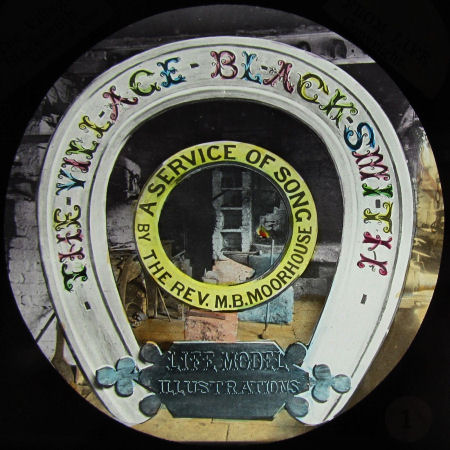 |
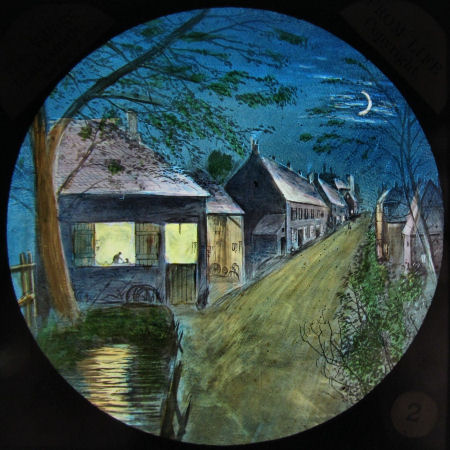 |
| 1. Title, 'The Village Blacksmith,' with picture of interior of smithy. | 2. The smithy throws out welcome rays to guide the traveller. |
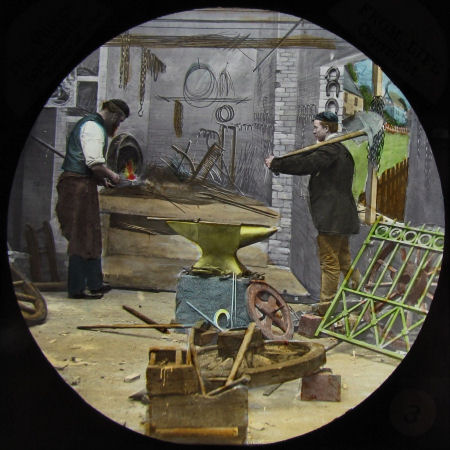 |
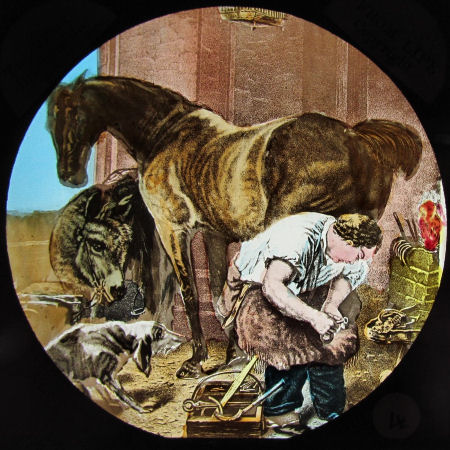 |
| 3. The labourer, with mattock and spade across his shoulder, will call here. | 4. The horses come down for their shoeing. |
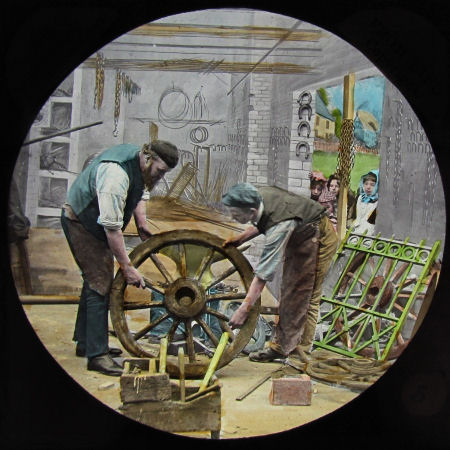 |
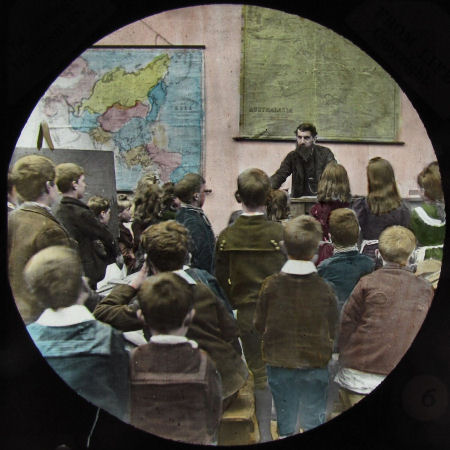 |
| 5. Always ready to give the weight of his arm or the help of his counsel. | 6. I want each of you to ask your father if he will promise.... |
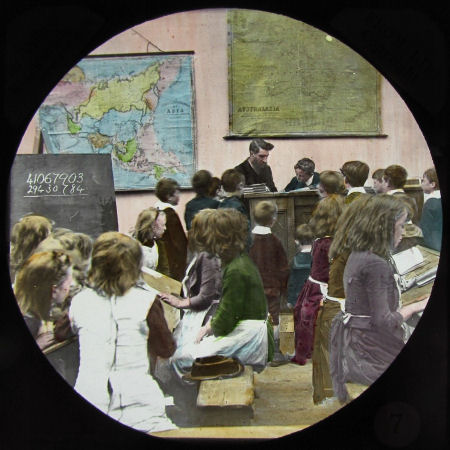 |
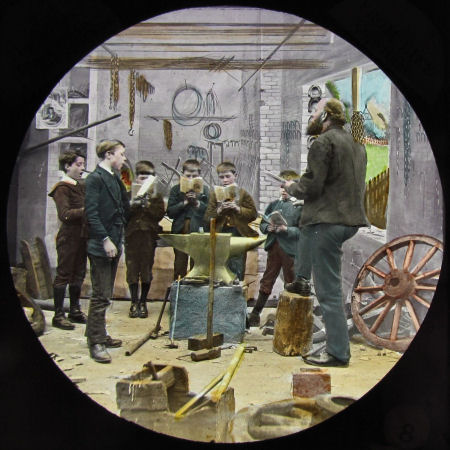 |
| 7. Eager to tell of my success, and to sign the pledge. | 8. We began with a tuneful children's chorus. |
 |
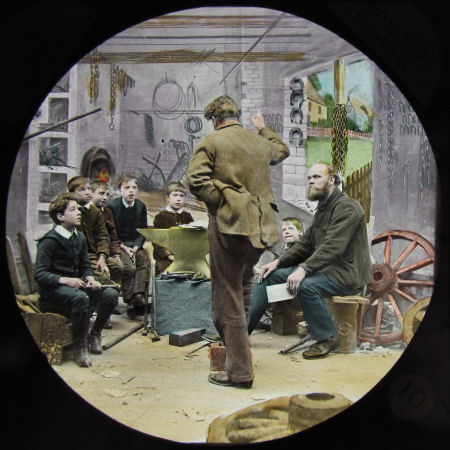 |
| 9. He chose the forget-me-not as our special badge. | 10. Our kind schoolmaster then addressed us on words derived from the surroundings of the smithy. |
 |
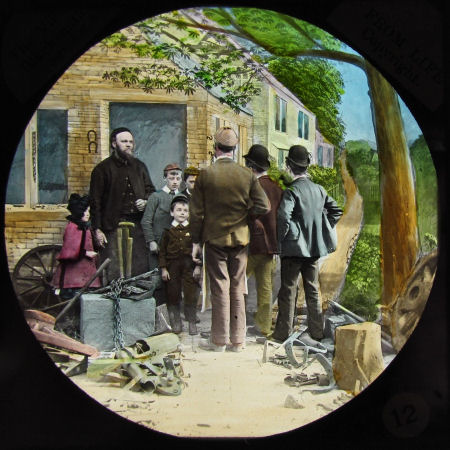 |
| 11. 'What an effect is produced upon metals by the action of fire'. | 12. They stood looking in and listening at the door. |
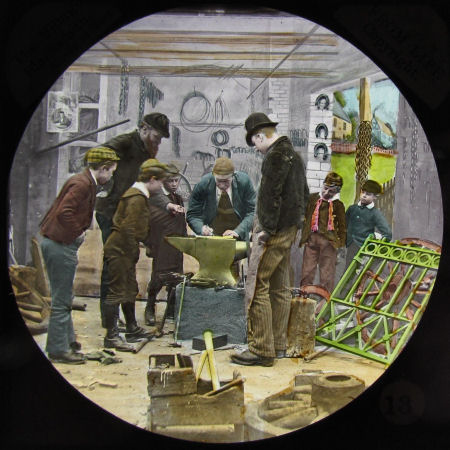 |
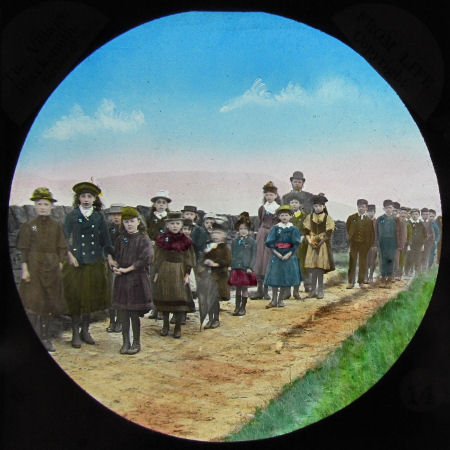 |
| 13. They set down their names on the pledge book which was lying on the anvil. | 14. He arranged an excursion for us to some pretty woods at a distance. |
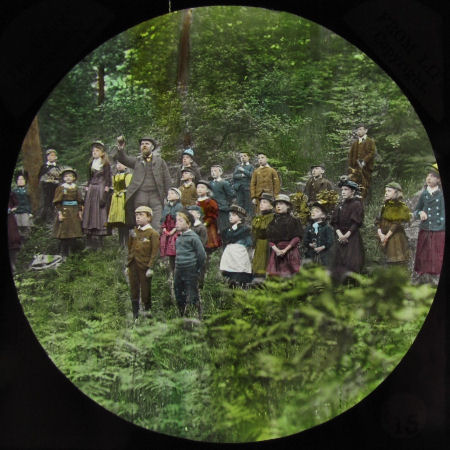 |
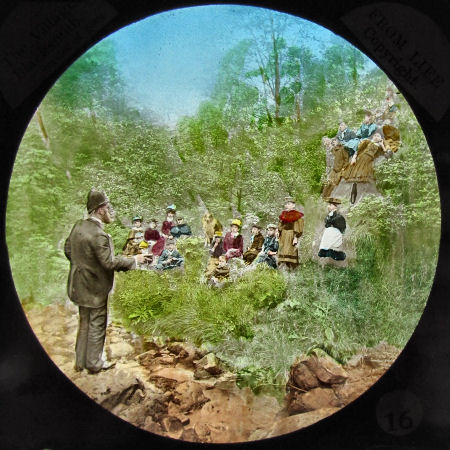 |
| 15. He did not fail to draw useful lessons from their happy lives and innocent habits. | 16. In the middle of the day, when we were glad to sit under the shady tree. |
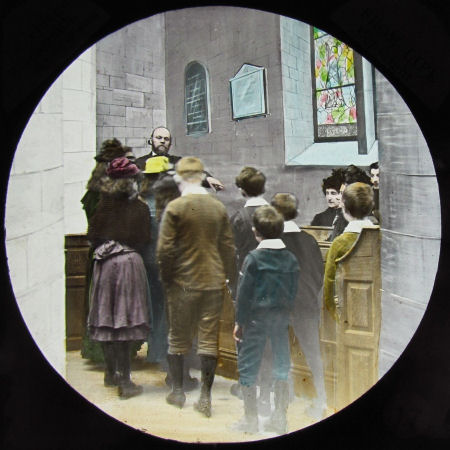 |
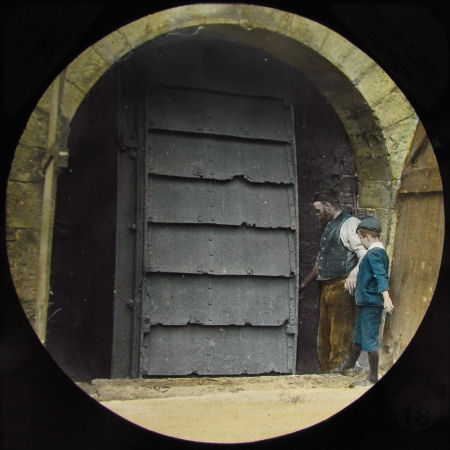 |
| 17. He led us up the aisle to the seats, which we nearly filled. | 18. He held my hand while I looked eagerly at the ponderous gigantic wheel. |
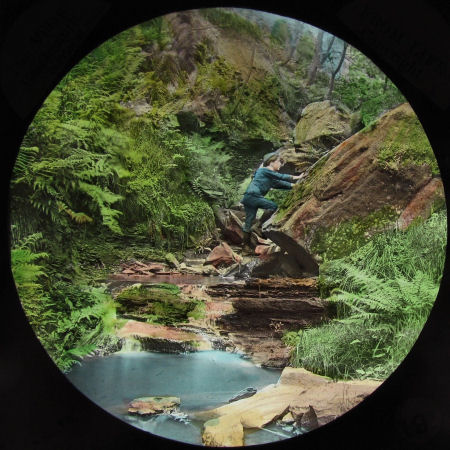 |
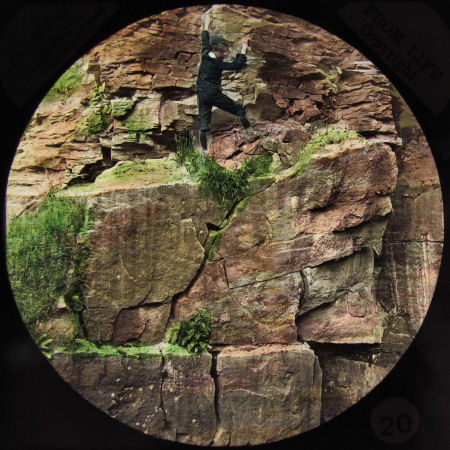 |
| 19. I followed the course of a stream to its fountain. | 20. So sheer was the precipice close to my feet. |
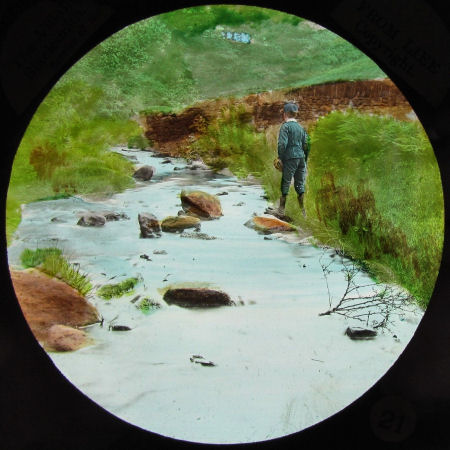 |
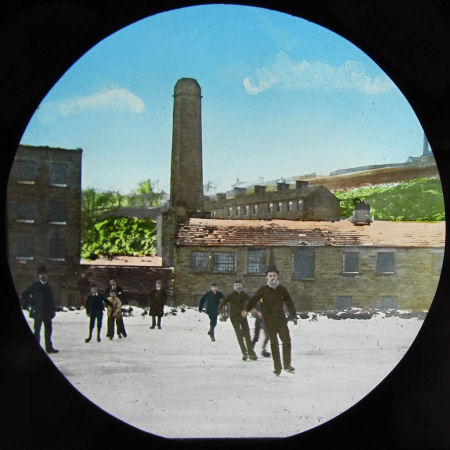 |
| 21. I wandered next day by a swift flowing river. | 22. Was held smooth and fast in the fetters of frost. |
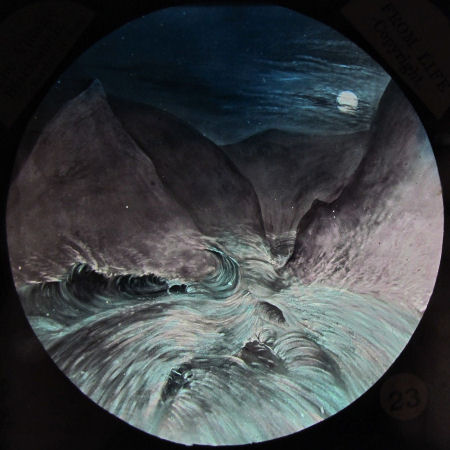 |
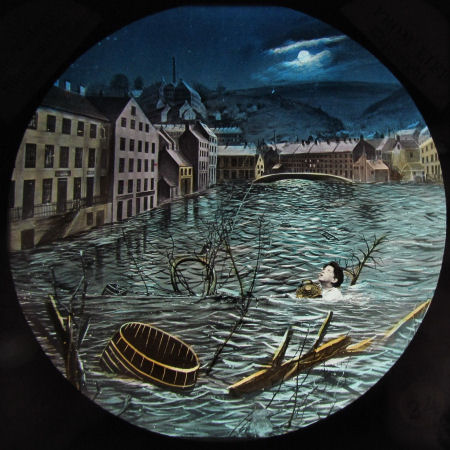 |
| 23. And likely to burst its banks through the heavy downpour. | 24. The moon was shining brightly, and lit up a wild waste of water. |
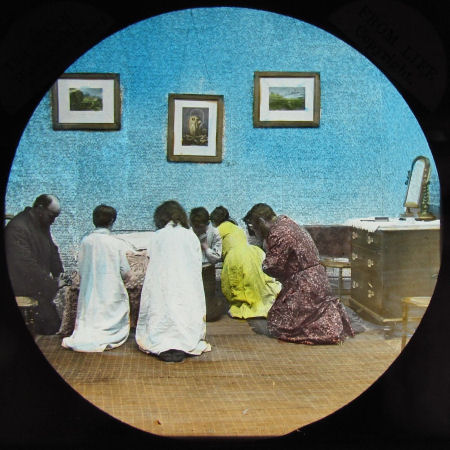 |
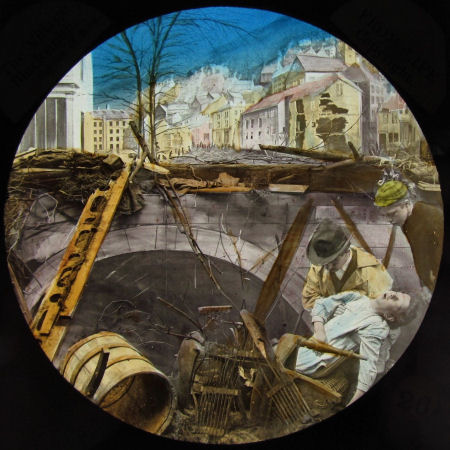 |
| 25. Never can I forget the scene as we knelt there in the moonlight. | 26. It left its deep-scored mark upon our valley, where eighty-one lives had been swept away in a few moments. |
| A small set of four black and white square magic lantern slides made by York & Son, England, can be found here. | |
|
The Better Land. A Life Model set probably made by Bamforth & Co. England (1895) after the song 'The Better Land' by Felicia Hemans and Frederic H. Cowen. Glass slides measure 8.2 by 8.2 cm. This set is designed to be viewed using two projectors or a biunial. The slides #2, #4 and # 6 contain the effect that has to be superimposed on the next slide by means of the biunial. |
||
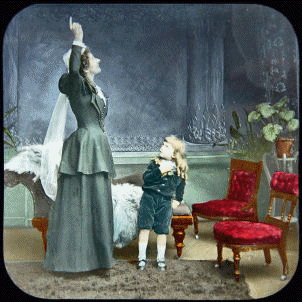 |
Often two versions of such a series were made. One for using two magic lanterns, like this one, and another version with slides that already contain the effect and could be used on one projector. In that case the two slides, one with and one without the effect, should be projected after another. |
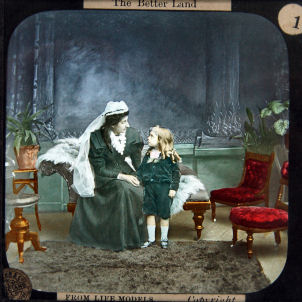 |
| The image above gives an impression of how the effect slides have to be superimposed using a biunial. |
Mother, where is that radiant shore? Shall we not seek it, and weep no more? |
|
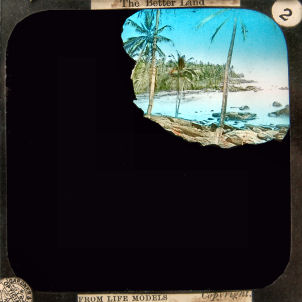 |
 |
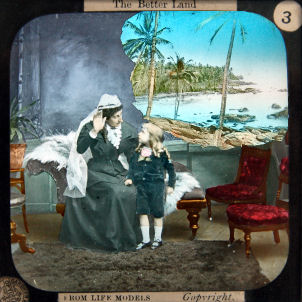 |
| (Effect) Is it where the flower of the orange blows... | Or the fire-flies dance through the myrtle boughs? | Not there, not there, my child. |
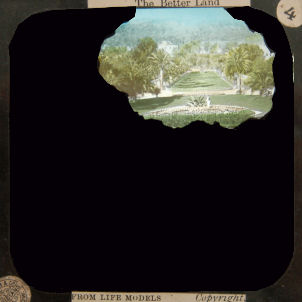 |
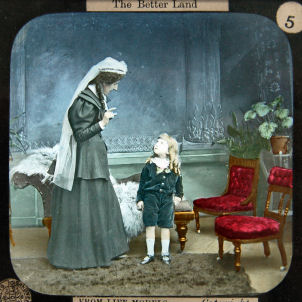 |
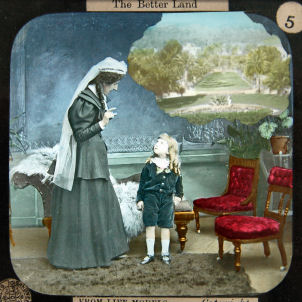 |
| Is it far away in some region old / Where the rivers wander o'er sands of gold. | (Effect) And the pearl gleams forth from the coral strand. |
Is it there, sweet mother, that better land? |
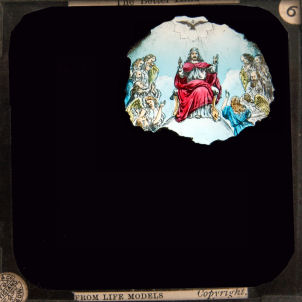 |
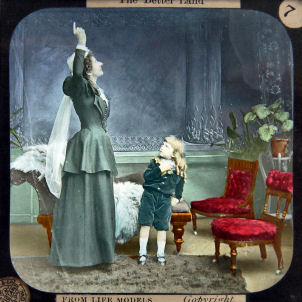 |
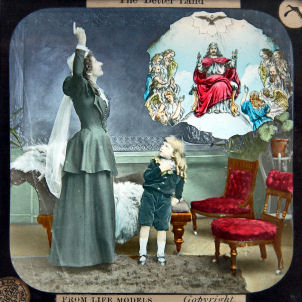 |
|
Not there, not there, my child. Eye hath not seen it, my gentle boy, |
Ear hath not heard its deep songs of joy; (Effect) Dreams cannot picture a world so fair. |
Far beyond the clouds, far beyond the tomb. It is there, it is there, my child, 'tis there. |
|
The Better Land. A second set of slides based on the song 'The Better Land' made by an unknown manufacturer. Judging by the boy's haircut, this series came out later. |
||
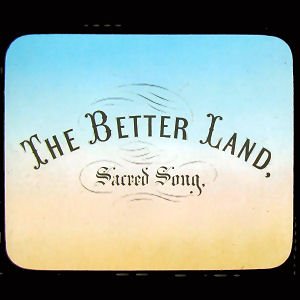 |
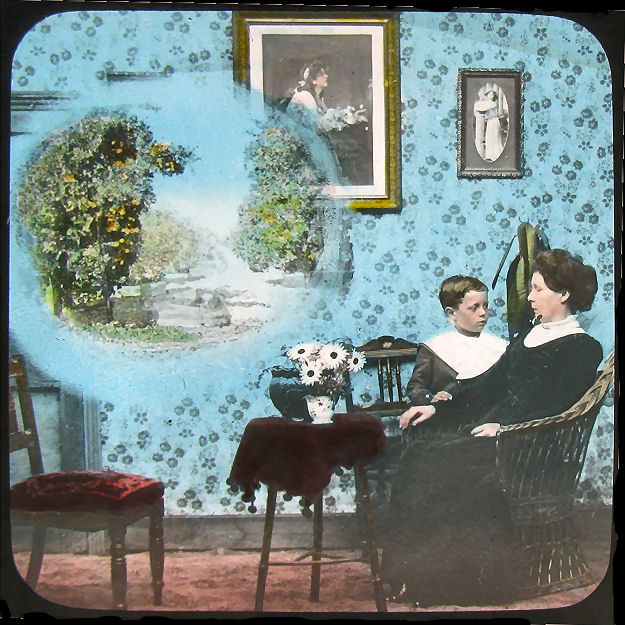 |
|
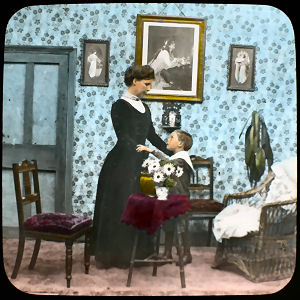 |
||
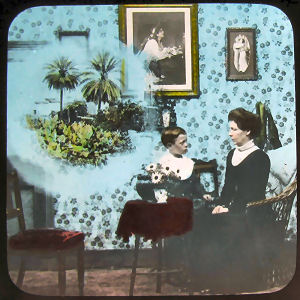 |
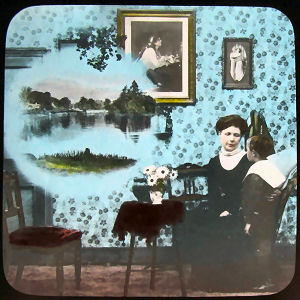 |
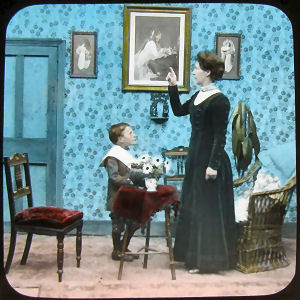 |
|
Enoch Arden. Enoch Arden is a narrative poem published in 1864 by the British poet Alfred Tennyson. The poem lent its name to a principle in law that after being missing seven years, a person could be declared dead for purposes of remarriage and inheritance. Twenty hand tinted living model magic lantern slides. Manufacturere York & Son, England 1890. The set of slides below is composed of at least two different sets. |
||
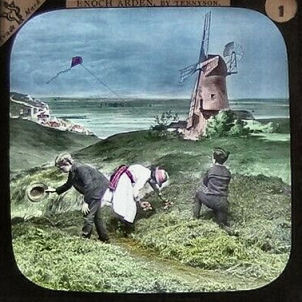 |
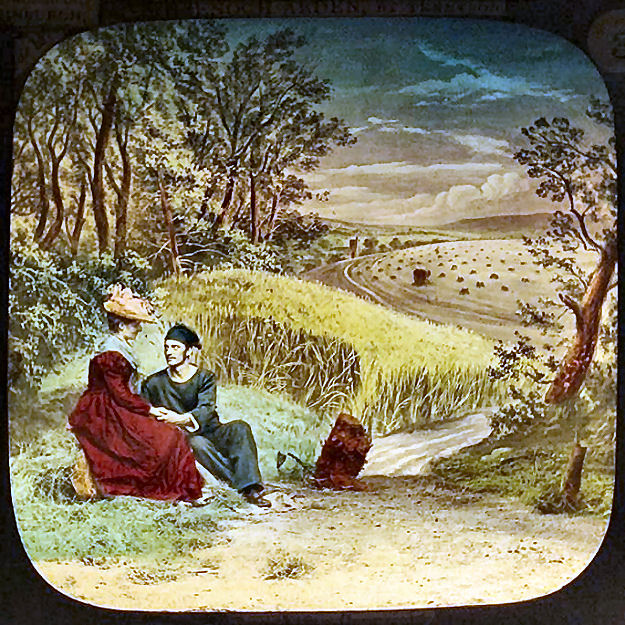 |
|
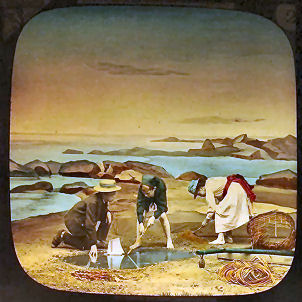 |
||
| 1. A long street climbs to one tall-tower'd mill | 2. Three children of three houses | 3. Enoch and Annie, sitting hand in hand |
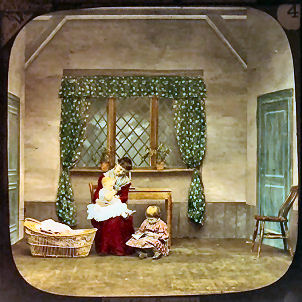 |
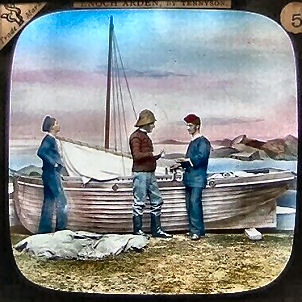 |
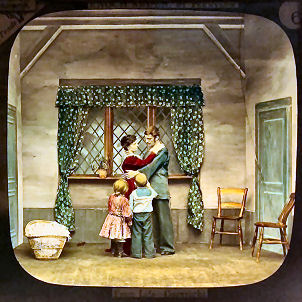 |
| 4. The rosy idol of her solitudes | 5. Enoch parted with his old sea-friend | 6. Enoch cast her arms about his drooping wife |
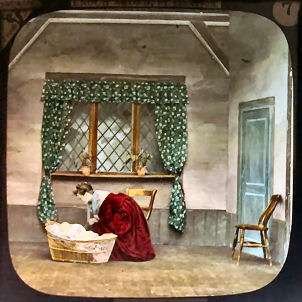 |
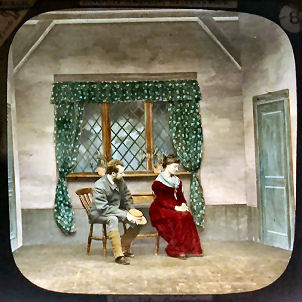 |
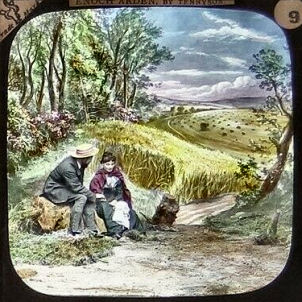 |
| 7. The mother cared for it with all a mother's care | 8. He set himself beside her | 9. It is beyond all hope, against all chance |
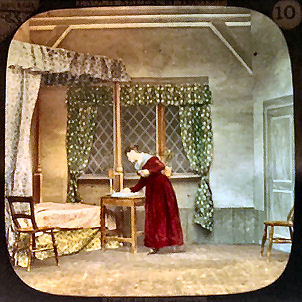 |
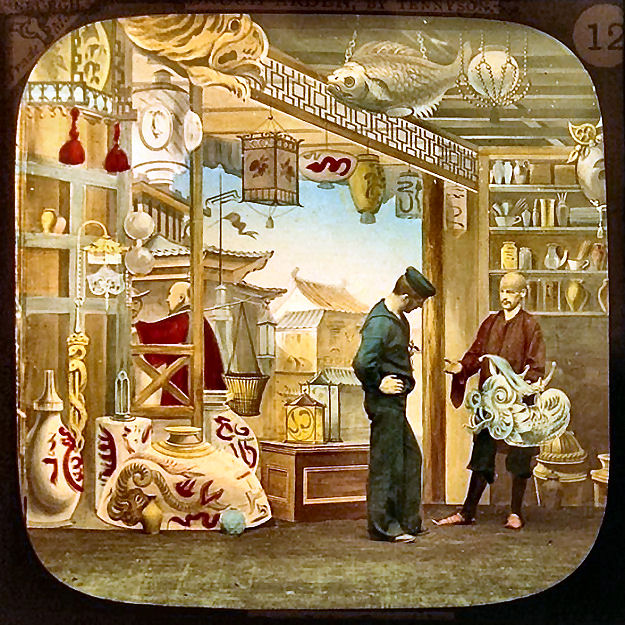 |
|
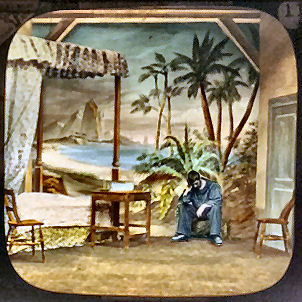 |
||
| 10. Suddenly set it wide to find a sign | 11. Her Enoch sitting under a palm-tree. | 12. Enoch bought quaint monsters |
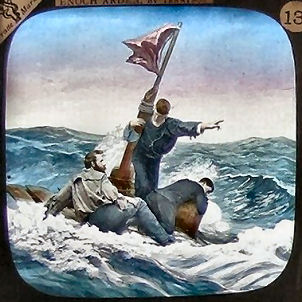 |
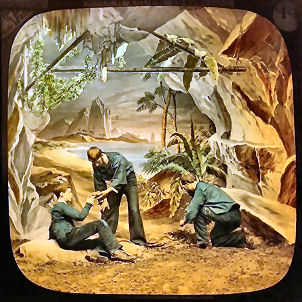 |
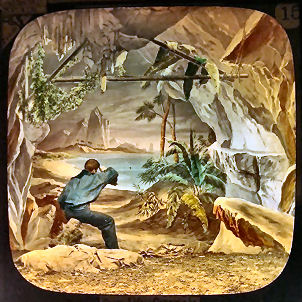 |
| 13. The loss of all but Enoch and two others | 14. So the three dwelt with eternal summer | 15. A ship-wreck'd sailor waiting for a sail |
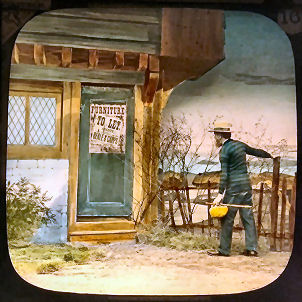 |
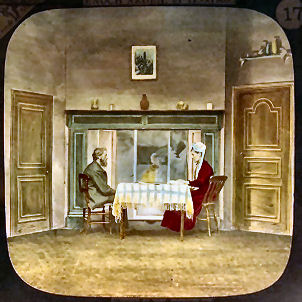 |
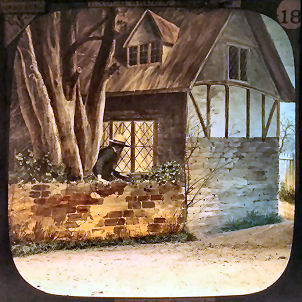 |
| 16. A bill of sale gleam'd thro' the drizzle | 17. But Miriam Lane was good and garrulous | 18. That which he better might have shunn'd he saw |
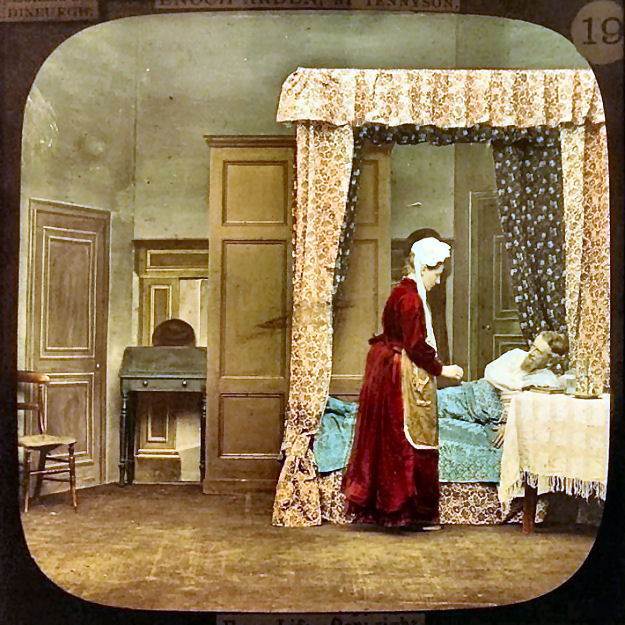 |
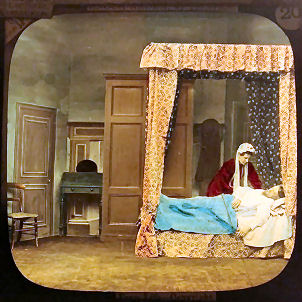 |
|
|
The hero of the poem, the merchant
sailor Enoch Arden, leaves his wife Annie and three children to go to sea with
his old captain, who offers him work. During his voyage, Enoch Arden is
shipwrecked on a desert island with two companions. Enoch Arden remains lost and
missing for more than ten years. He finds upon his return from the sea that, after his long absence, his wife is married happily to his childhood friend Philip and has a child by him. Enoch never reveals to his wife and children that he is really alive, as he loves her too much to spoil her new happiness. Enoch dies of a broken heart. |
||
| THE END. | ||
| 19. Woman, I have a secret | 20. And so fell back and spoke no more | |
|
|
But there is more..... |
|
| |
©1997-2023 'de Luikerwaal' All rights reserved. Last update: 01-07-2023. |
|